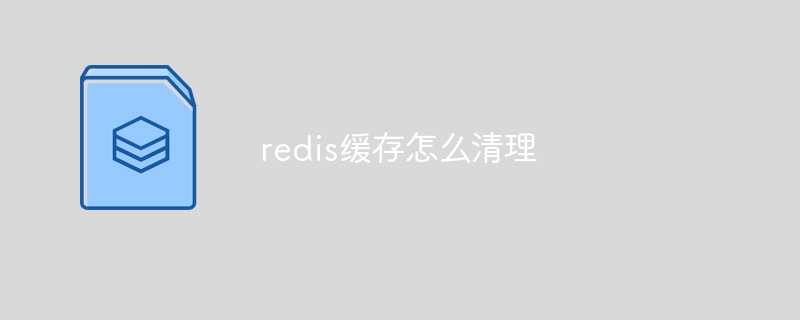清理 Redis 缓存有五种方法:FLUSHDB:清空整个数据库。FLUSHALL:清空所有 Redis 实例。DEL:删除特定键及其值。EXPIRE:为密钥设置生存时间。UNLINK:从数据库中取消链接密钥。

如何清理 Redis 缓存
Redis 缓存是一种高性能、内存中的数据结构存储,用于存储频繁访问的数据以提高应用程序的性能。随着时间的推移,缓存可能会变得臃肿,因此需要定期清理以确保其有效性。
清理方法
有多种方法可以清理 Redis 缓存:
FLUSHDB 命令可以清空整个数据库,包括所有键和值。这是一种快速而简单的方法,但它将删除所有数据。FLUSHDB,但它将清空所有 Redis 实例,包括所有数据库和键。此命令比 FLUSHDB 更具破坏性,应谨慎使用。DEL 命令可以删除特定的键及其关联的值。此方法更加精确,因为它允许您选择要删除的内容。EXPIRE 命令可以为密钥设置生存时间。超出生存时间后,键和值将自动删除。UNLINK 命令可以从数据库中取消链接密钥,而无需删除其关联的值。这对于释放不再使用的密钥有帮助。选择清理方法
选择适当的清理方法取决于您的具体要求:
FLUSHDB 或 FLUSHALL。DEL 或 UNLINK。EXPIRE。最佳实践
以下是一些清理 Redis 缓存的最佳实践:
EXPIRE 命令避免存储不需要的数据。以上就是redis缓存怎么清理的详细内容,更多请关注php中文网其它相关文章!

每个人都需要一台速度更快、更稳定的 PC。随着时间的推移,垃圾文件、旧注册表数据和不必要的后台进程会占用资源并降低性能。幸运的是,许多工具可以让 Windows 保持平稳运行。

Copyright 2014-2025 https://www.php.cn/ All Rights Reserved | php.cn | 湘ICP备2023035733号